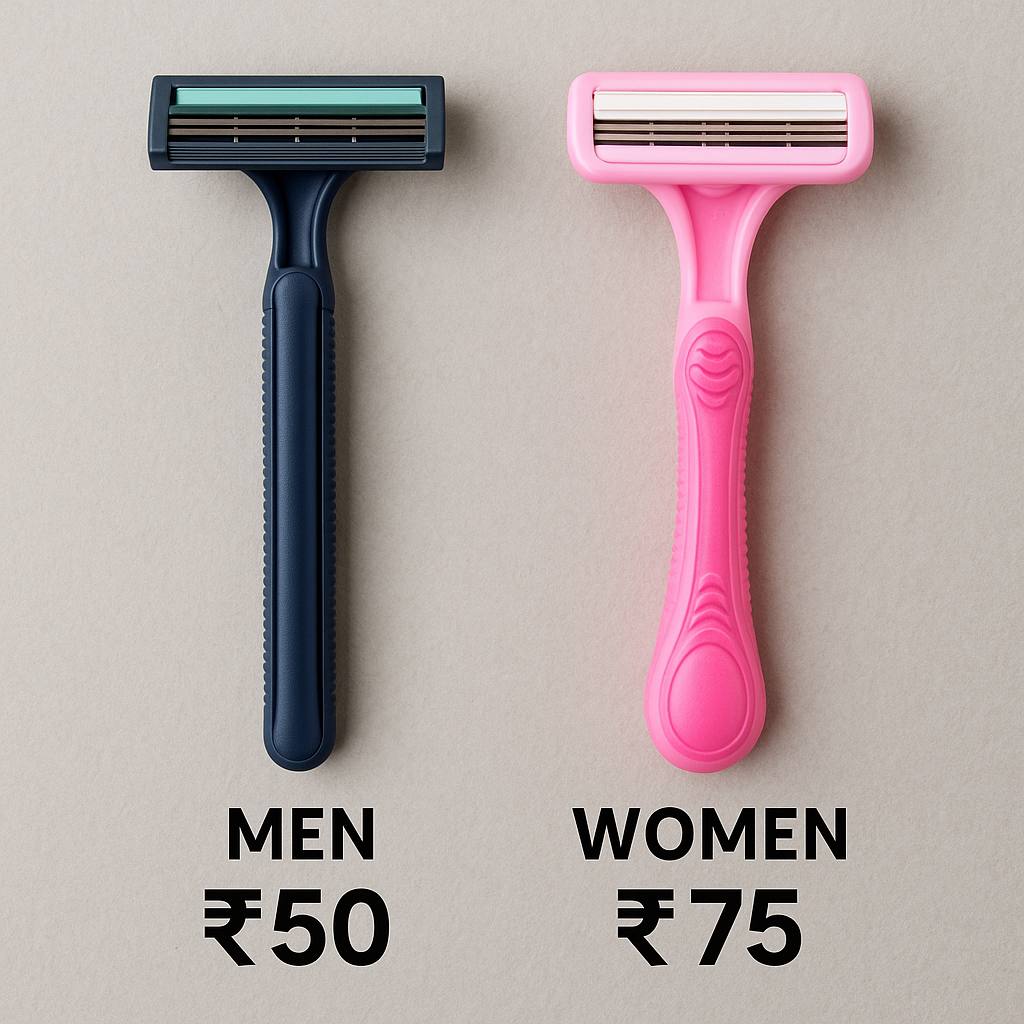The article is written by Soumyashree Mohanty, Research and Documentation Unit, CYDA.

Discrimination is a word we’re all familiar with. It shows up in many forms-through caste, colour, class, and gender. While policies have been created to reduce inequality, some forms of discrimination continue silently. One such example is the Pink Tax-an invisible cost that women pay simply because they are women.
What is the Pink Tax?
The Pink Tax isn’t government-imposed. It refers to the extra money women pay for products and services explicitly marketed to them. For example, a blue razor for men might be cheaper than a pink one for women, even though they serve the same purpose. Women are made to pay extra, not for the quality, but for the packaging, colour, or just the fact that it’s “for her.”
This pricing pattern was officially recognized in 1994 in California. Researchers found that women were consistently being charged more than men for similar items. A later study by New York City’s Department of Consumer Affairs (2015) showed that women’s products cost about 7% more on average. For personal care items, the price difference goes up to 13%.
How Companies Profit from Gender Norms
These price differences are not accidental. Companies take advantage of gender stereotypes to increase profits. They believe women are more conscious of brands and appearances. So, they use gendered packaging-floral designs, soft colours, and “feminine” words-to make everyday products seem more special or different.
Men’s shampoos are usually marketed as strong and simple. Women’s shampoos, on the other hand, are labelled as “moisturizing” or “nourishing.” Even when the ingredients are the same, the women’s version is priced higher. This is not about better quality-it’s about targeted marketing and profit.
The Pressure to Look ‘Presentable’
Society places a disproportionate amount of pressure on women to look a certain way. Grooming is not only a personal practice; it also has social significance. Whether attending a job interview, wedding, or just going about everyday life, women are expected to maintain a certain standard of appearance. This expectation isn’t self-imposed. It’s shaped by advertising, media, and long-standing cultural norms that link a woman’s value to her looks. Companies recognize this and use it to sell more products. For women, grooming is no longer optional. It becomes a social responsibility-one that comes at a higher cost.
When Women Pay More and Earn Less
What makes the Pink Tax even more unfair is the gender pay gap. Globally, women earn about 20% less than men, according to the International Labour Organization (ILO,2023). In India, women earn around 22% less than men. As per the Monster Salary Index (2022), the average hourly wage is Rs 215.5 for women and Rs 276.5 for men.
So, women are earning less and spending more. They face a double financial burden. This creates long-term inequality and limits women’s economic freedom.
Pink Tax: More Than Just a Pricing Issue
The Pink Tax is not just about expensive razors or shampoos. It reflects a larger problem-how gender inequality is built into our economic and social systems. It shows how companies use outdated gender roles to increase profits. To move toward absolute equality, we need to question these practices. We must promote gender-neutral pricing, reject unnecessary packaging differences, and push for stronger consumer protection laws.
A woman should not have to pay more just to meet standards that society unfairly places on her. The fight against the Pink Tax is part of a larger movement-for fairness, dignity, and economic justice.


